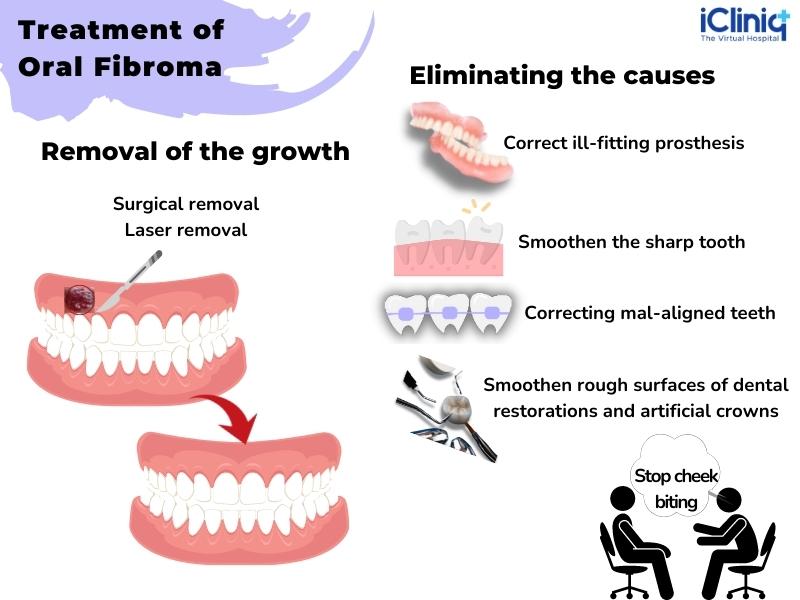Fibroma Of The Tongue: Effective Treatment Options Available

The tongue, a vital part of our oral cavity, plays a significant role in our ability to speak, eat, and overall quality of life. However, various conditions can affect the tongue, including fibroma, a type of benign tumor. Fibroma of the tongue, although not cancerous, can still cause discomfort, pain, and difficulties with speech and eating. Understanding the condition, its symptoms, diagnosis, and most importantly, the effective treatment options available is crucial for individuals affected by this condition.
Introduction to Fibroma of the Tongue
Fibroma of the tongue is essentially a growth that consists of fibrous or connective tissue. It is one of the most common types of benign tumors that can occur in the oral cavity, with the tongue being a frequent site. These growths are usually slow-growing, firm, and can vary in size. Despite being benign, their presence can lead to issues such as discomfort, difficulty in speaking clearly, and challenges with eating or swallowing, especially if they grow large enough to obstruct the tongue’s movement or if they are located in a sensitive area.
Symptoms and Diagnosis
The symptoms of fibroma of the tongue can vary depending on the size and location of the fibroma. Common symptoms include:
- A noticeable lump or swelling on the tongue
- Discomfort or pain, especially if the fibroma is irritated by food, dental work, or the teeth
- Difficulty speaking clearly due to the obstruction caused by the fibroma
- Challenges with eating or swallowing
- Alteration in the taste sensation in some cases
Diagnosing fibroma of the tongue typically involves a visual examination by a healthcare professional, such as a dentist or an oral surgeon, followed by a biopsy to confirm the nature of the growth. The biopsy involves removing a small sample of tissue from the fibroma and examining it under a microscope. This step is crucial to differentiate fibroma from other types of oral lesions and to rule out any malignancy.
Treatment Options for Fibroma of the Tongue
Fortunately, there are effective treatment options available for fibroma of the tongue, tailored to the individual’s specific condition and needs. The primary goal of treatment is to remove the fibroma, alleviate symptoms, and restore normal tongue function. Here are some of the treatment options:
Surgical Excision: This is the most common treatment method, where the fibroma is surgically removed. The procedure is usually straightforward and can be performed under local anesthesia to minimize discomfort. The surgeon will remove the fibroma along with a small margin of surrounding healthy tissue to ensure complete removal.
Laser Excision: In some cases, laser technology can be used to remove the fibroma. This method can offer advantages such as less bleeding, less pain post-operatively, and quicker healing times compared to traditional surgical methods.
Cryotherapy: This involves using extreme cold to destroy the fibroma. While less commonly used for fibromas of the tongue, it can be an option for smaller lesions.
After the removal of the fibroma, it’s essential to follow the post-operative instructions carefully to ensure proper healing and minimize the risk of complications. This may include a soft diet for a few days, avoiding irritants like tobacco or alcohol, and maintaining good oral hygiene.
Prevention and Follow-Up
While the exact cause of fibroma of the tongue is not always clear, avoiding irritants to the oral cavity, such as tobacco, and ensuring good oral health through regular dental check-ups can help in the early detection and management of any oral lesions. After treatment, follow-up appointments with a healthcare provider are crucial to monitor the healing process and to check for any signs of recurrence.
Conclusion
Fibroma of the tongue, although a benign condition, can significantly impact an individual’s quality of life if left untreated. Fortunately, with the advancements in medical science, effective treatment options are available. By understanding the condition and the treatment choices, individuals can seek timely medical intervention, leading to the removal of the fibroma and a return to normal tongue function and overall well-being.
FAQ Section
What are the common symptoms of fibroma of the tongue?
+Common symptoms include a noticeable lump or swelling on the tongue, discomfort or pain, difficulty speaking clearly, and challenges with eating or swallowing.
How is fibroma of the tongue diagnosed?
+Diagnosis typically involves a visual examination by a healthcare professional followed by a biopsy to confirm the nature of the growth.
What are the treatment options for fibroma of the tongue?
+Treatment options include surgical excision, laser excision, and in some cases, cryotherapy. The choice of treatment depends on the size, location, and individual's specific needs.
Is fibroma of the tongue a cancerous condition?
+No, fibroma of the tongue is a benign condition, not cancerous. However, it's crucial to have any oral lesions checked by a healthcare professional to rule out other conditions.
What is the prognosis after treating fibroma of the tongue?
+The prognosis is generally good, with most individuals experiencing a full recovery after treatment. Regular follow-up appointments are necessary to monitor for any signs of recurrence.
Advanced Treatment Considerations
For individuals with fibroma of the tongue, especially those with larger lesions or in sensitive areas, seeking care from specialized oral surgeons or maxillofacial surgeons is advisable. These professionals have the expertise to handle complex cases and can provide the most appropriate treatment plan tailored to the individual’s needs. Additionally, advances in surgical techniques and technology, such as laser surgery, offer patients more options with potentially fewer side effects and quicker recovery times.
The Importance of Timely Intervention
Early detection and treatment of fibroma of the tongue are vital to prevent potential complications and ensure the best outcomes. Leaving a fibroma untreated can lead to increased discomfort, difficulties with speech and eating, and in rare cases, could potentially undergo malignant transformation, although this is extremely rare. Thus, individuals who notice any unusual growths or symptoms in their mouth should not hesitate to consult a healthcare professional.
Enhanced Recovery with Holistic Care
The journey to recovery from fibroma of the tongue involves not just the physical removal of the lesion but also considering the patient’s overall well-being. This includes dietary advice to ensure a soft and nutritious diet during the healing phase, guidance on oral hygiene to prevent infection, and sometimes, speech therapy to help regain normal speech patterns if the fibroma has affected speech. A holistic approach to care, focusing on both physical and emotional health, can significantly enhance the recovery process and improve the patient’s quality of life post-treatment.
The Future of Fibroma Treatment
As medical science continues to evolve, new and innovative treatments for fibroma of the tongue are being explored. This includes advanced surgical techniques, the use of biomaterials for reconstruction if necessary, and potentially, less invasive treatments that can offer quicker recovery times with minimal scarring. Patients should stay informed about these developments and discuss the latest options with their healthcare provider to make the most informed decision about their care.
In conclusion, fibroma of the tongue, while a significant condition, has effective treatment options available. By understanding the condition, its symptoms, diagnosis, and treatment choices, individuals can seek timely medical intervention, leading to the removal of the fibroma and a return to normal tongue function and overall well-being.

